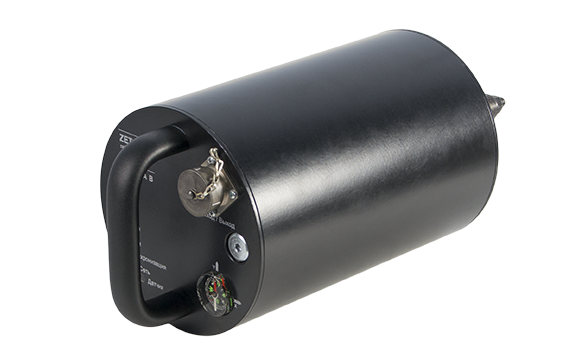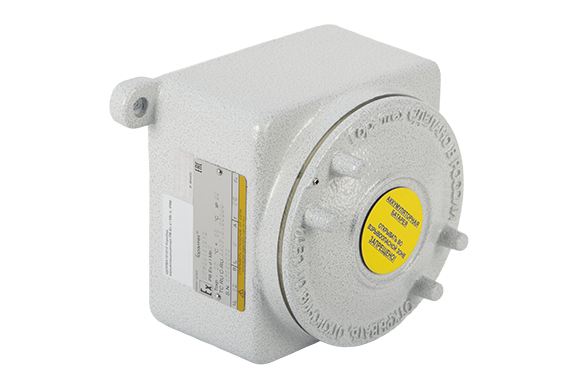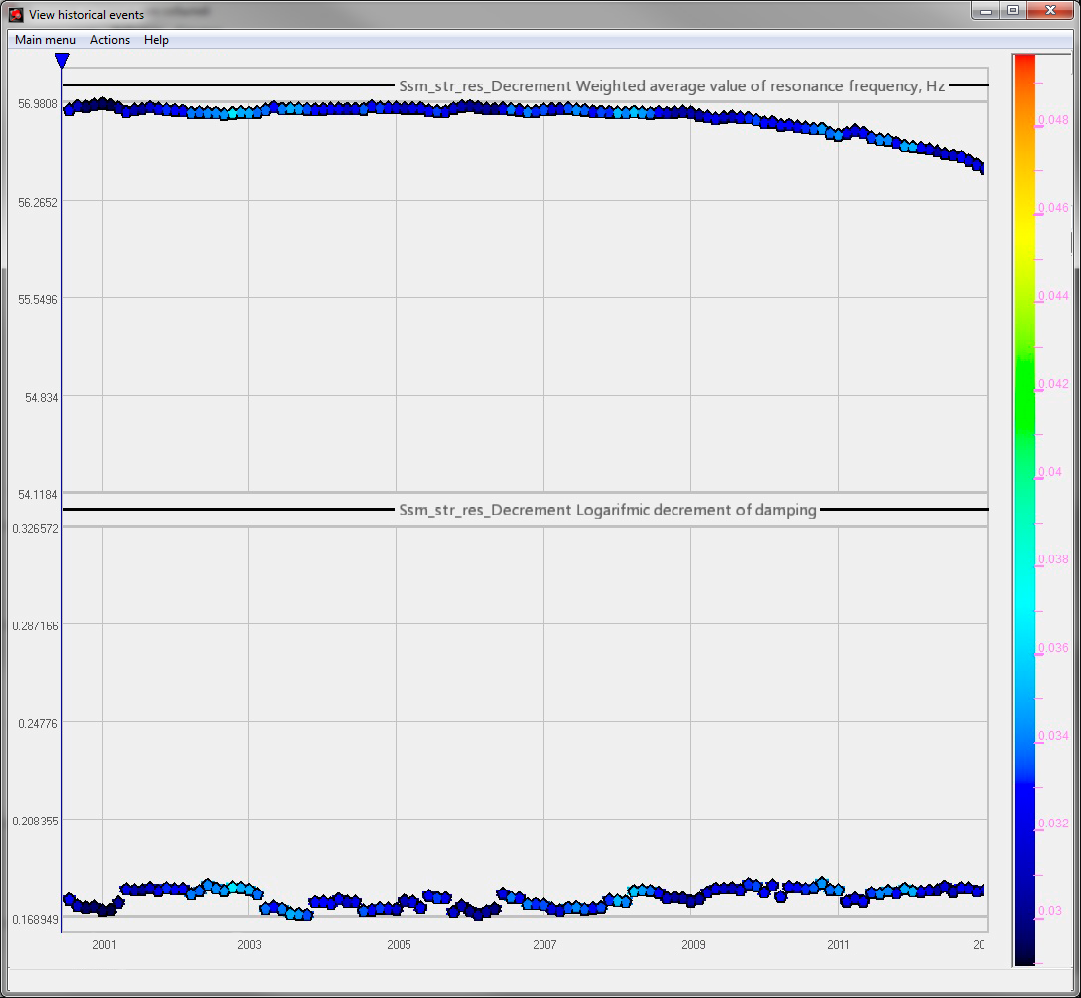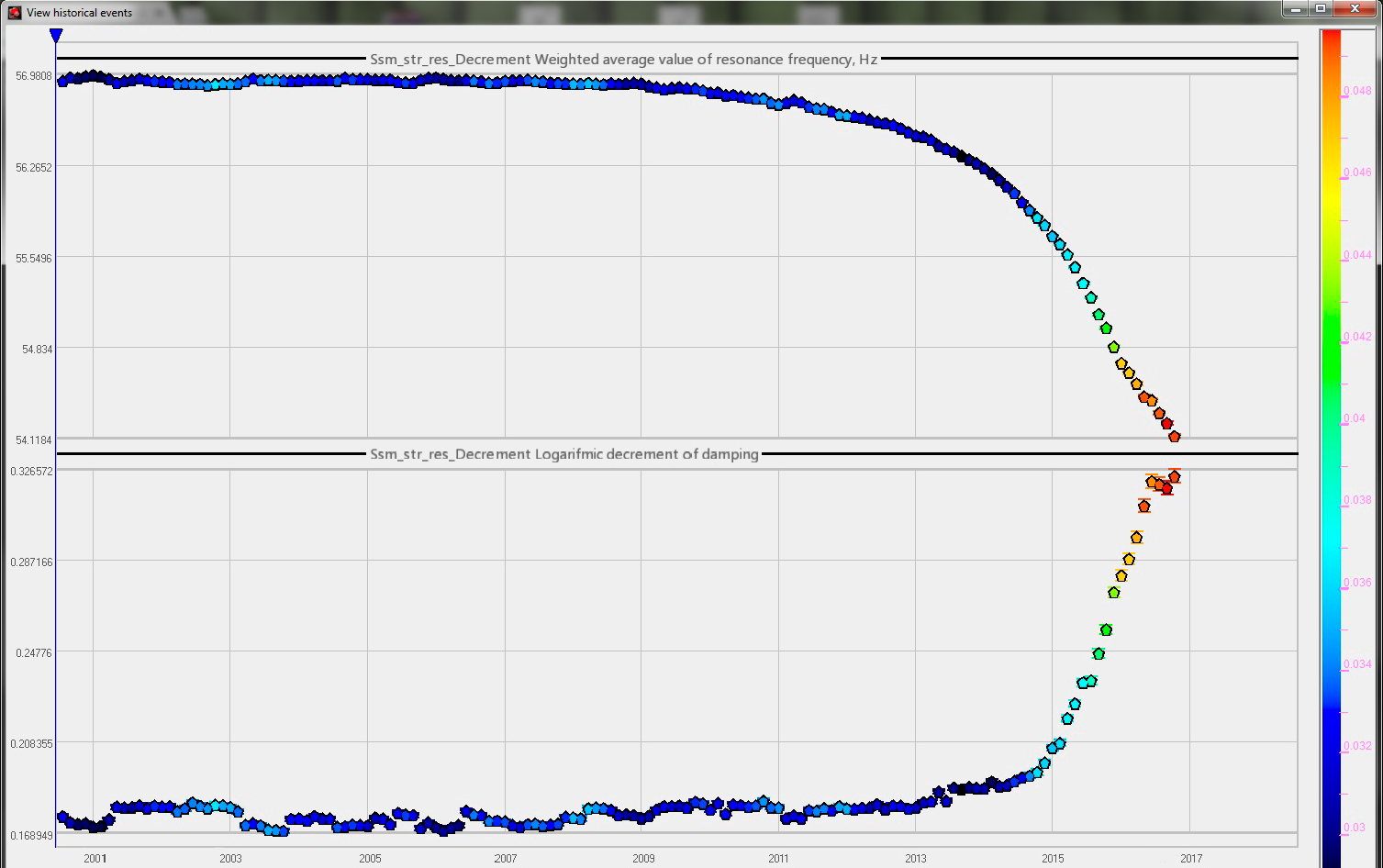Structural health monitoring (SHM) subsystem
Natural frequency and logarithmic decrement control
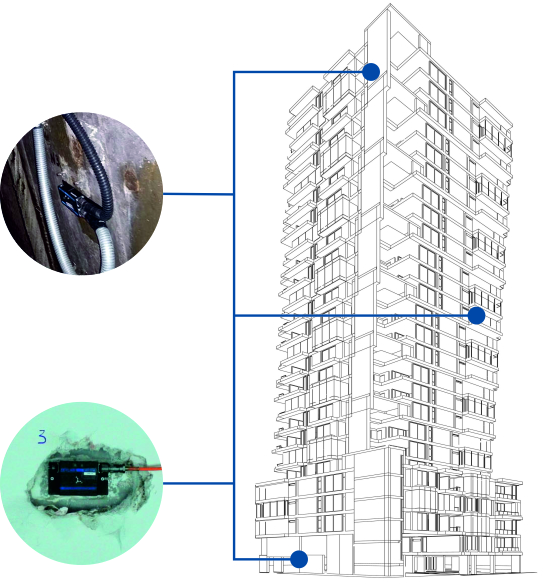
Dynamic probing techniques of buildings and structures have been used for stress-strain state control for a long time (especially during the last 10-15 years). This method is based on measuring building’s natural oscillations period and decrement.
Oscillations of buildings and bridges structures may be caused by nearby construction works, traffic and other man-made processes. Thus, for high structures, it is necessary to control stress-strain state changes as well as to find the particular location of such changes using other methods, which enable measuring process automation.
Exceeding the acceptable level of stress-strain state under certain circumstances may lead to a complete or partial destruction of the said structures and other negative consequences. There are a lot of such examples: Egyptian Bridge in St. Petersburg, Tacoma Narrows Bridge in the USA, Volgograd Bridge in Volgograd, etc.
Structural health monitoring subsystem “Natural frequency and logarithmic decrement control” enables automated control of acceptable stress-strain level exceeding for the purpose of accidents prevention.
The subsystem “Natural frequency and logarithmic decrement control” is based on ZET 7152-N and ZET 7156 digital sensors and enables automated control of structural elements vibrational acceleration, natural frequencies and corresponding logarithmic decrements.
General specifications
| Controlled parameter | Natural frequency | Decrement | Acceleration | Velocity |
| Module/ digital sensor type | ZET 7156 | ZET 7152‑N | ZET 7156 | |
| Measuring unit | Hz | – | m/s2 | µm/s |
| Measuring range | 0,5…20 | 0,05…0,9 | -140…+140 | 0,1…250 |
| Minimal registered value | 0,02 % | 2 % | 0,1 | 0,1 |
| ALARM bottom threshold level | 2 % | 10 % | 3 | 2 |

